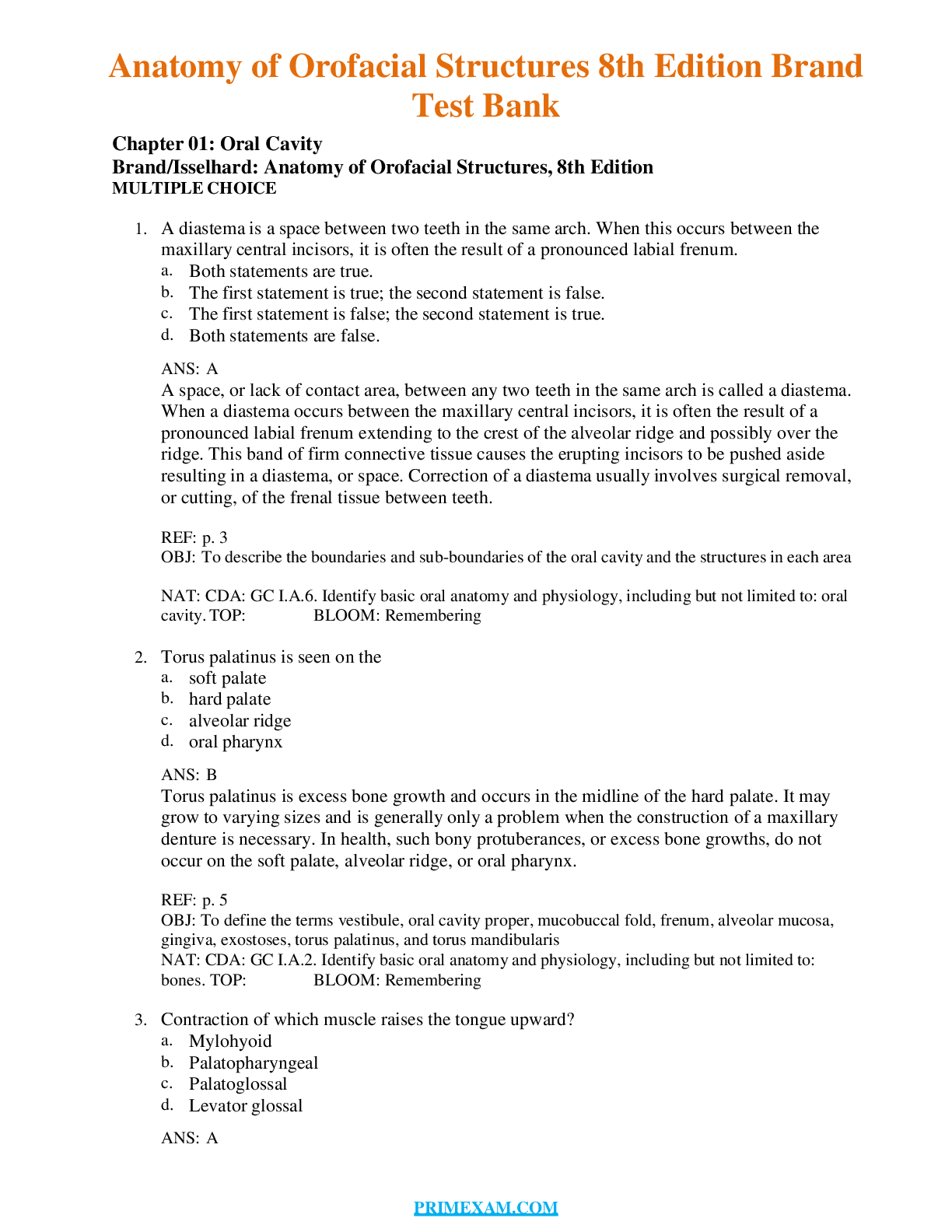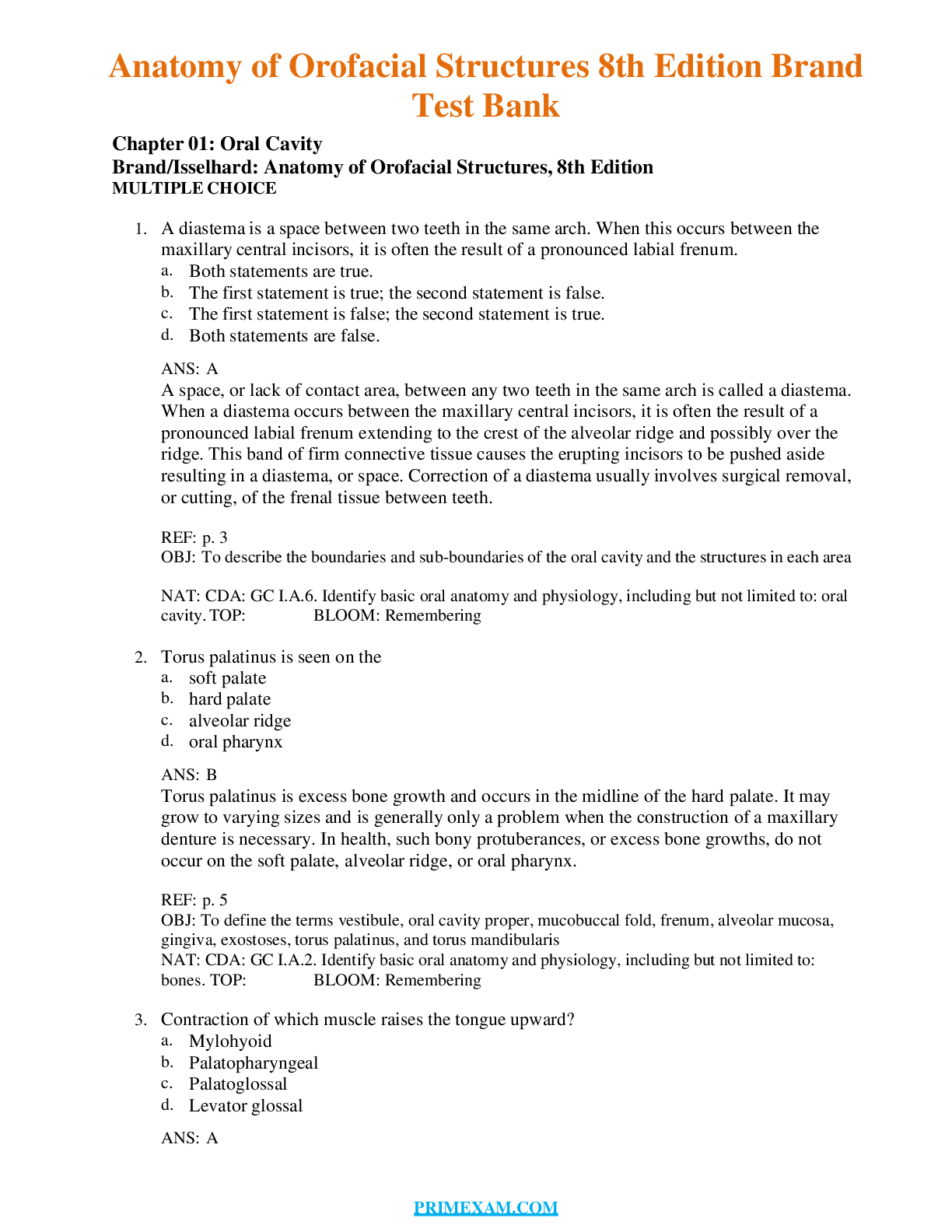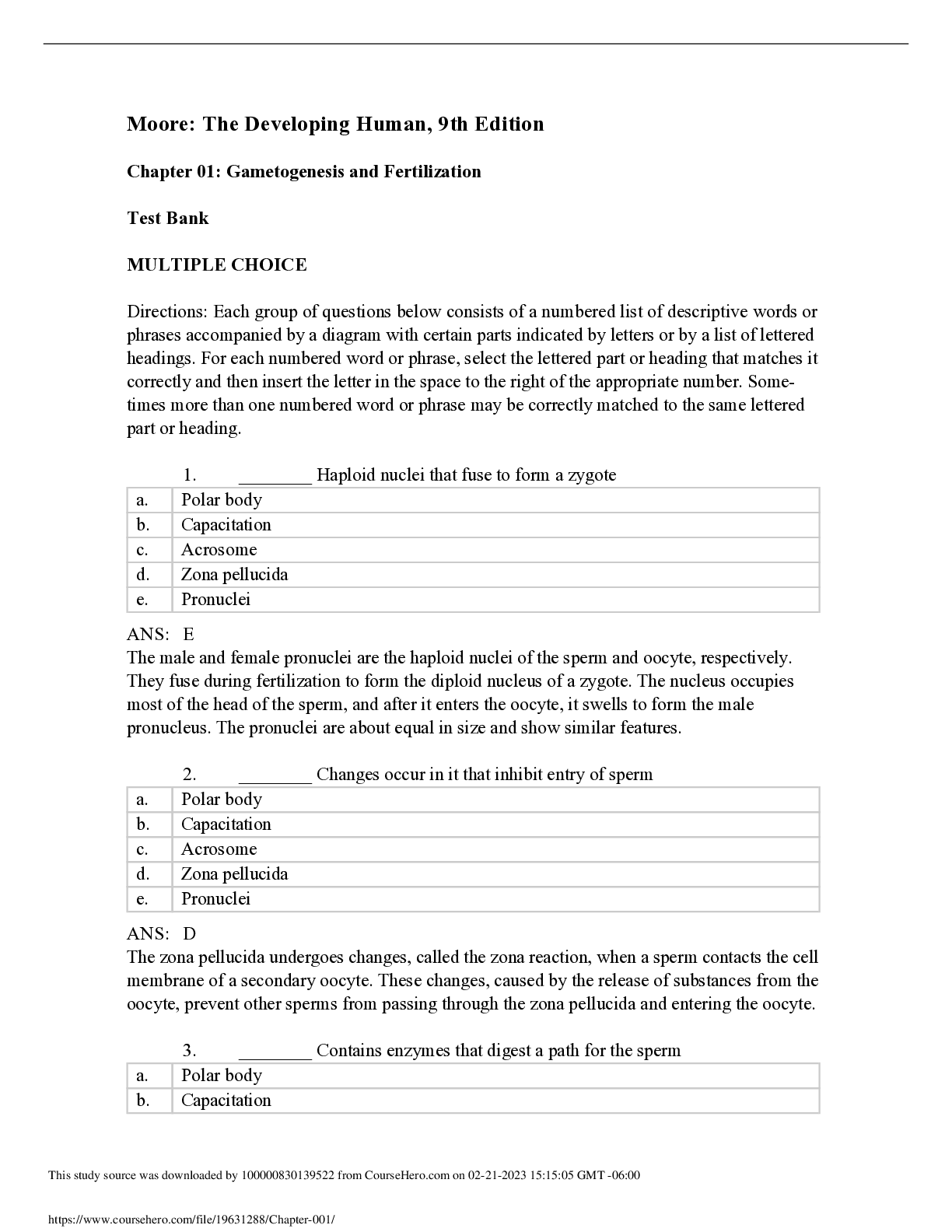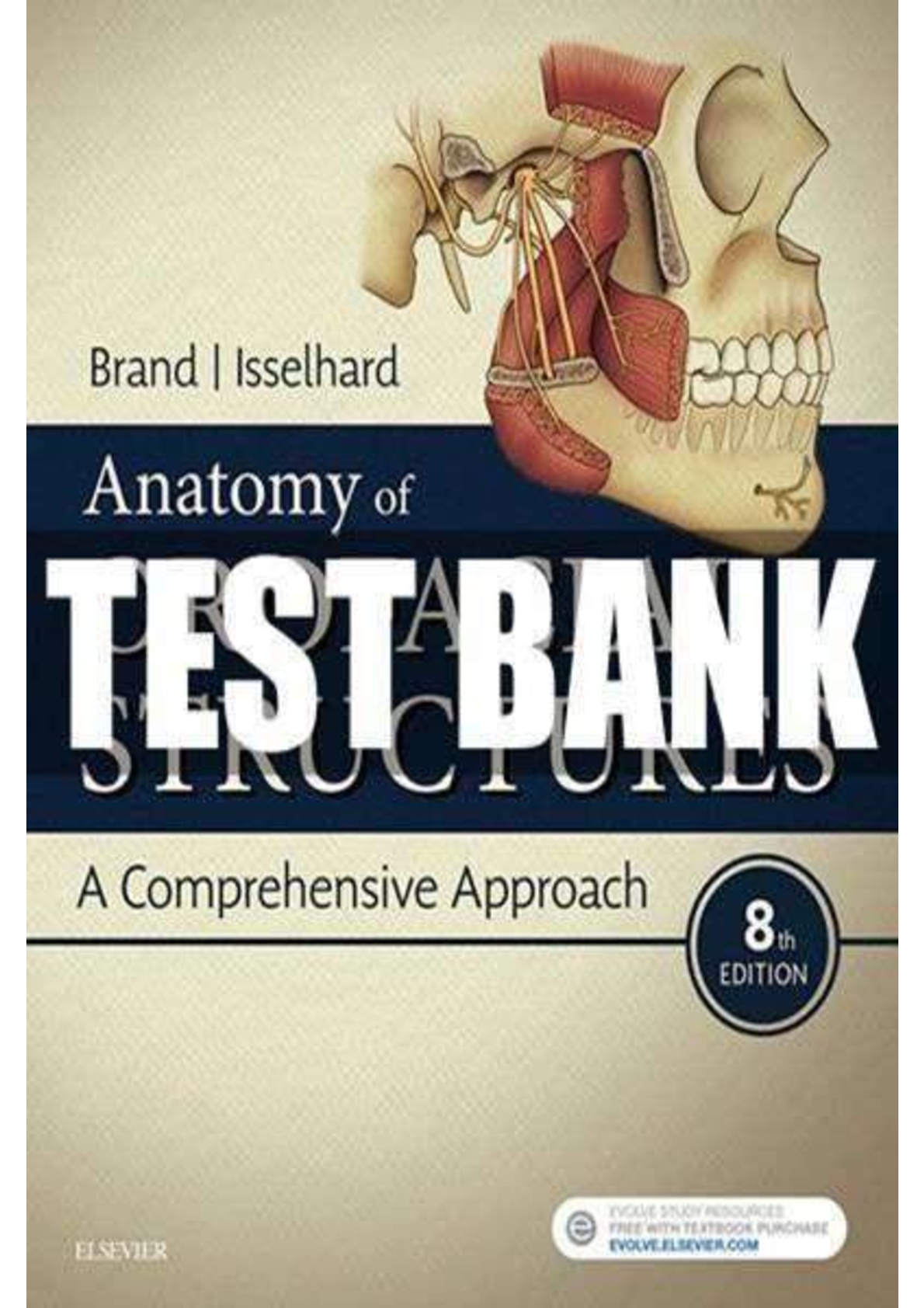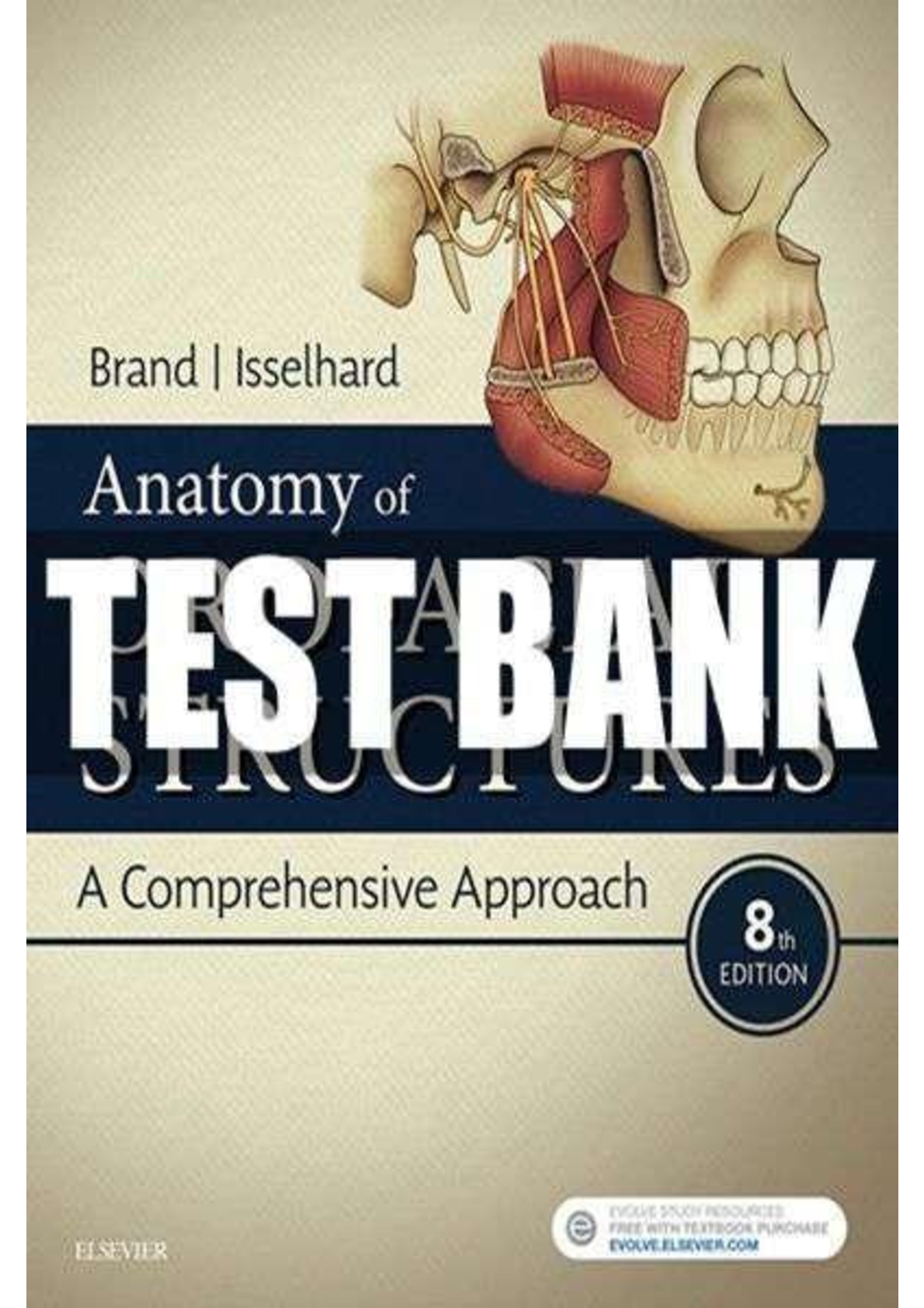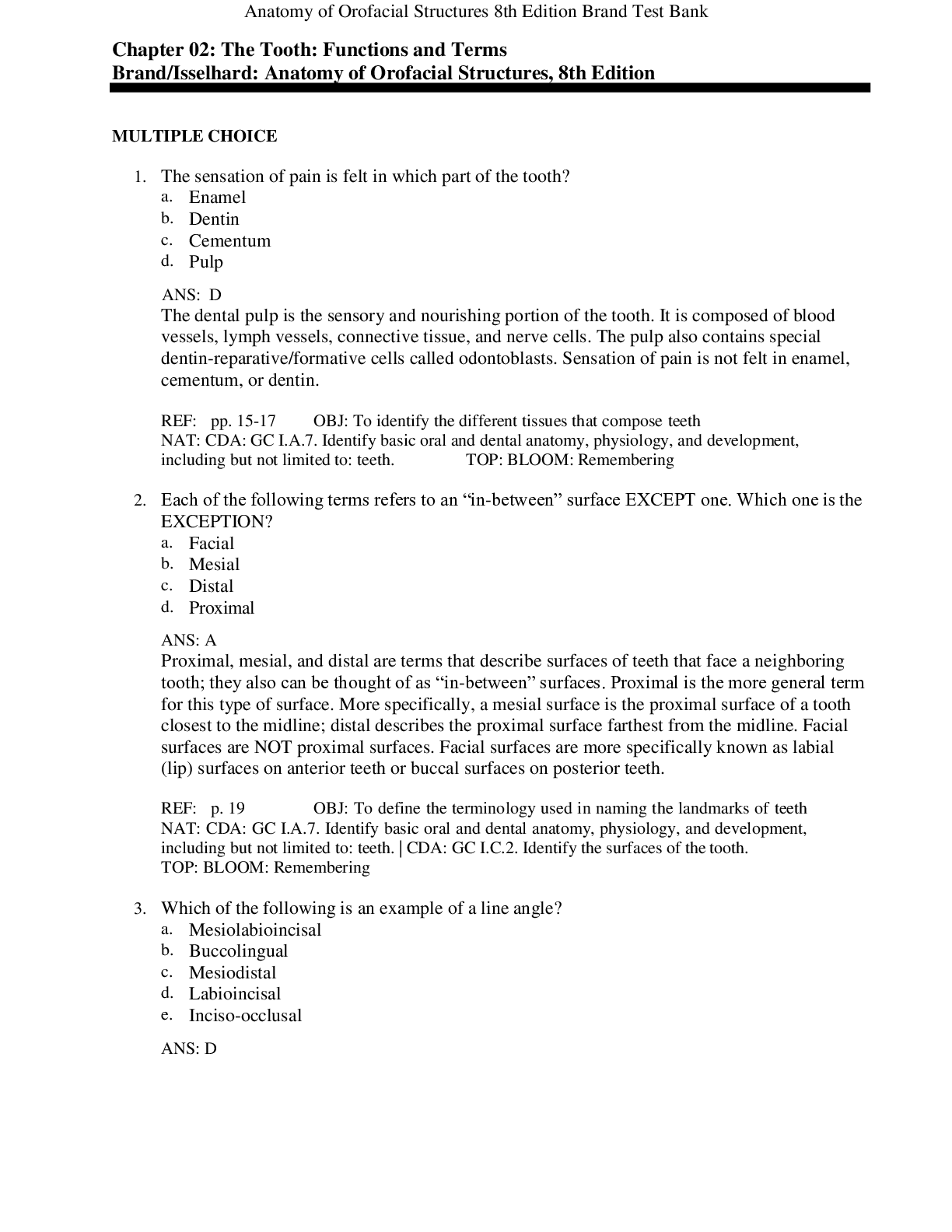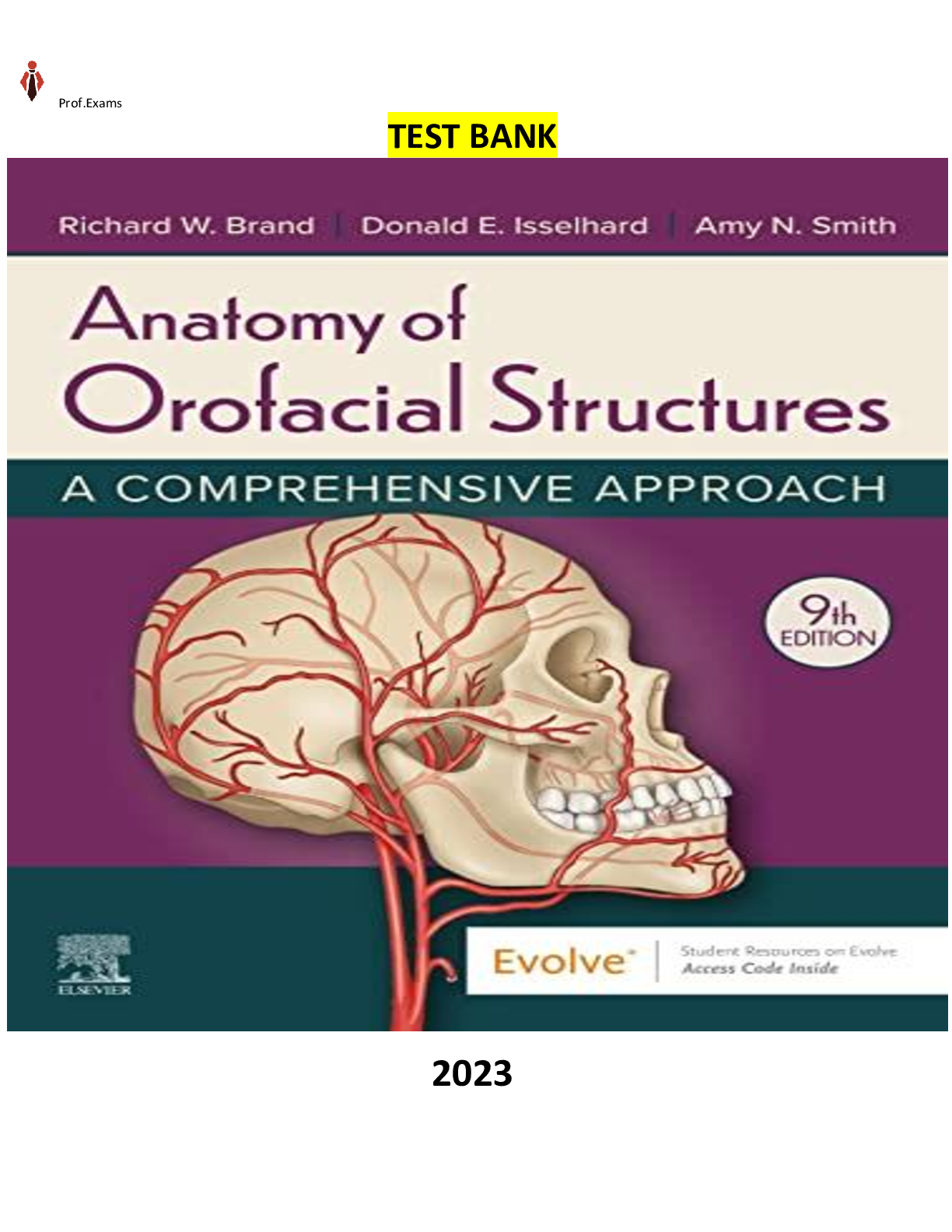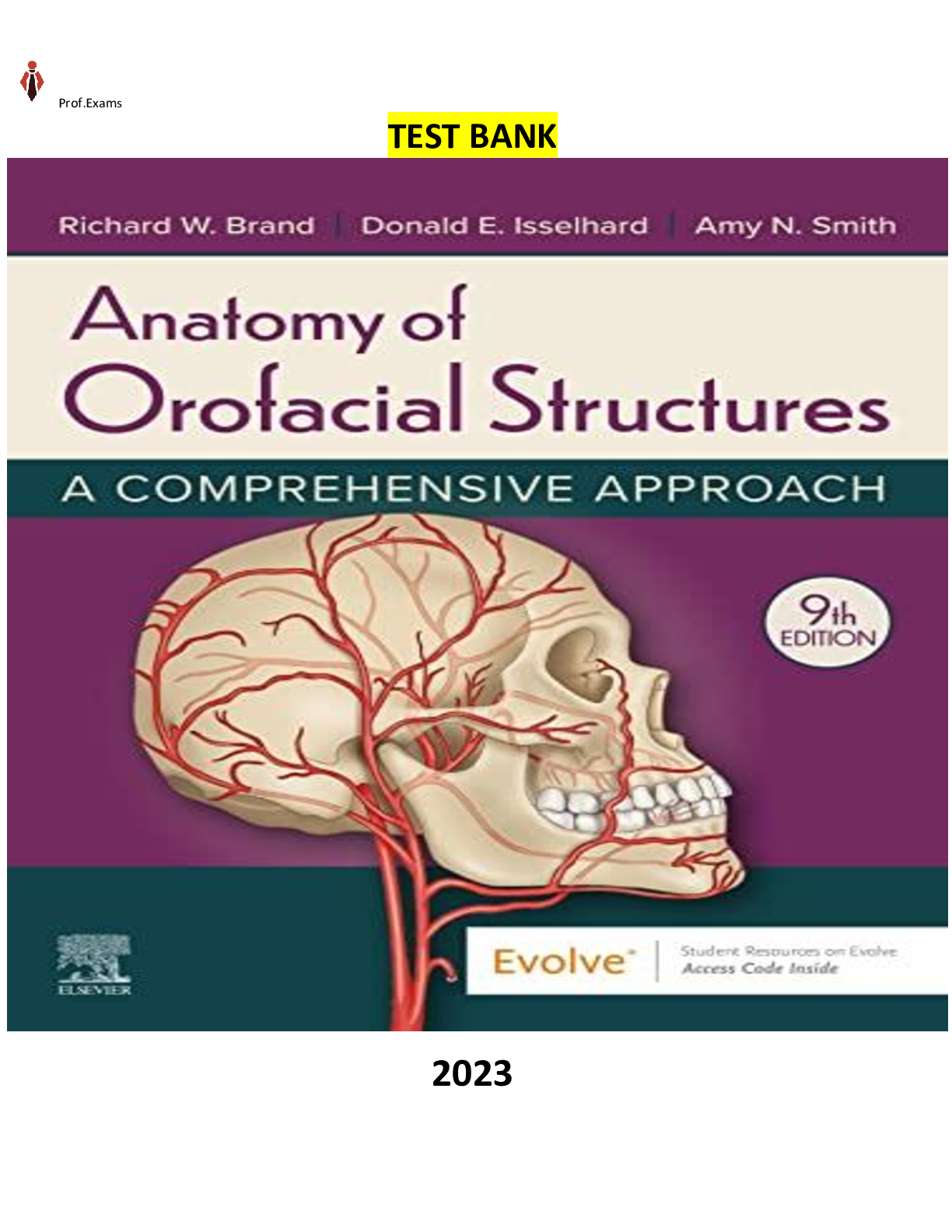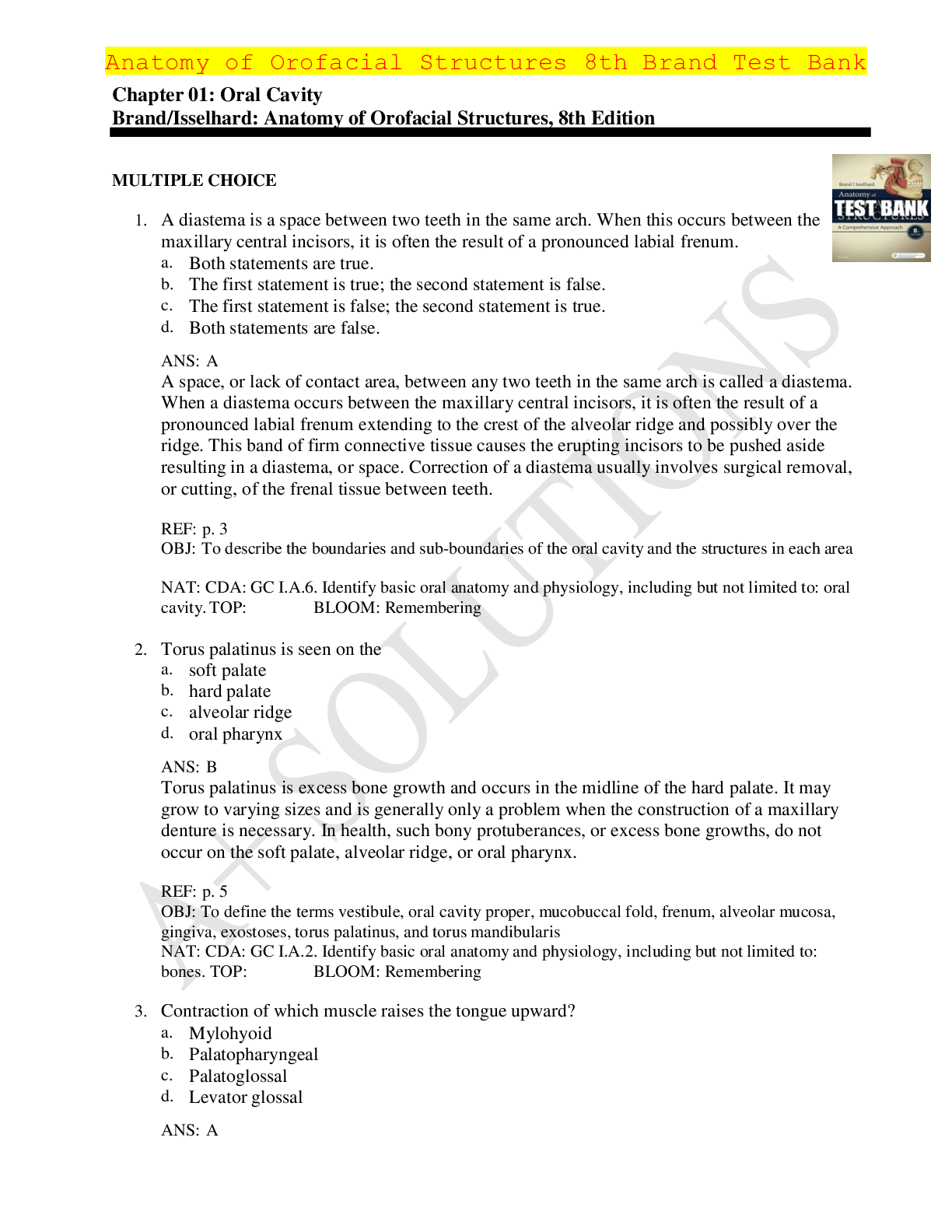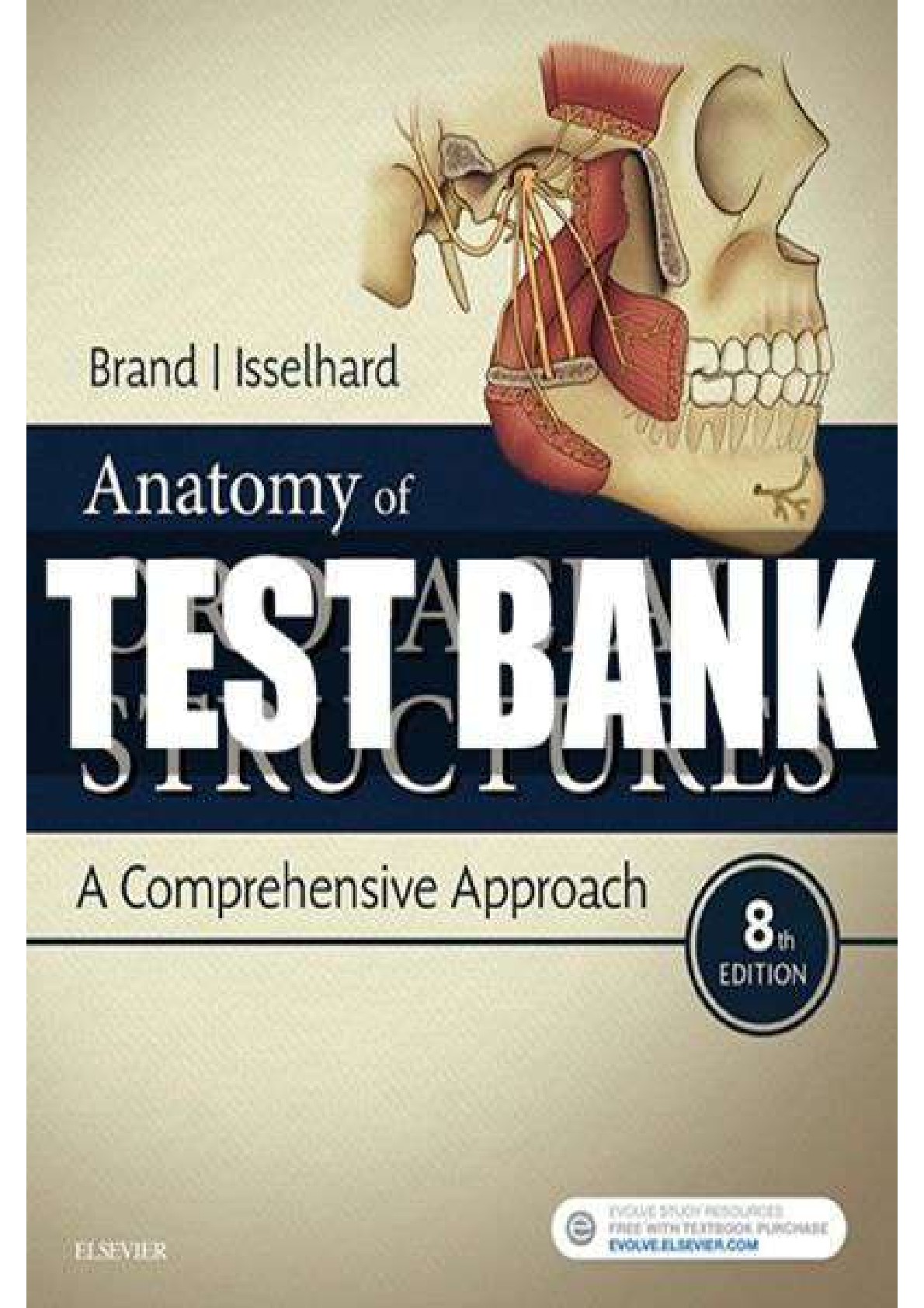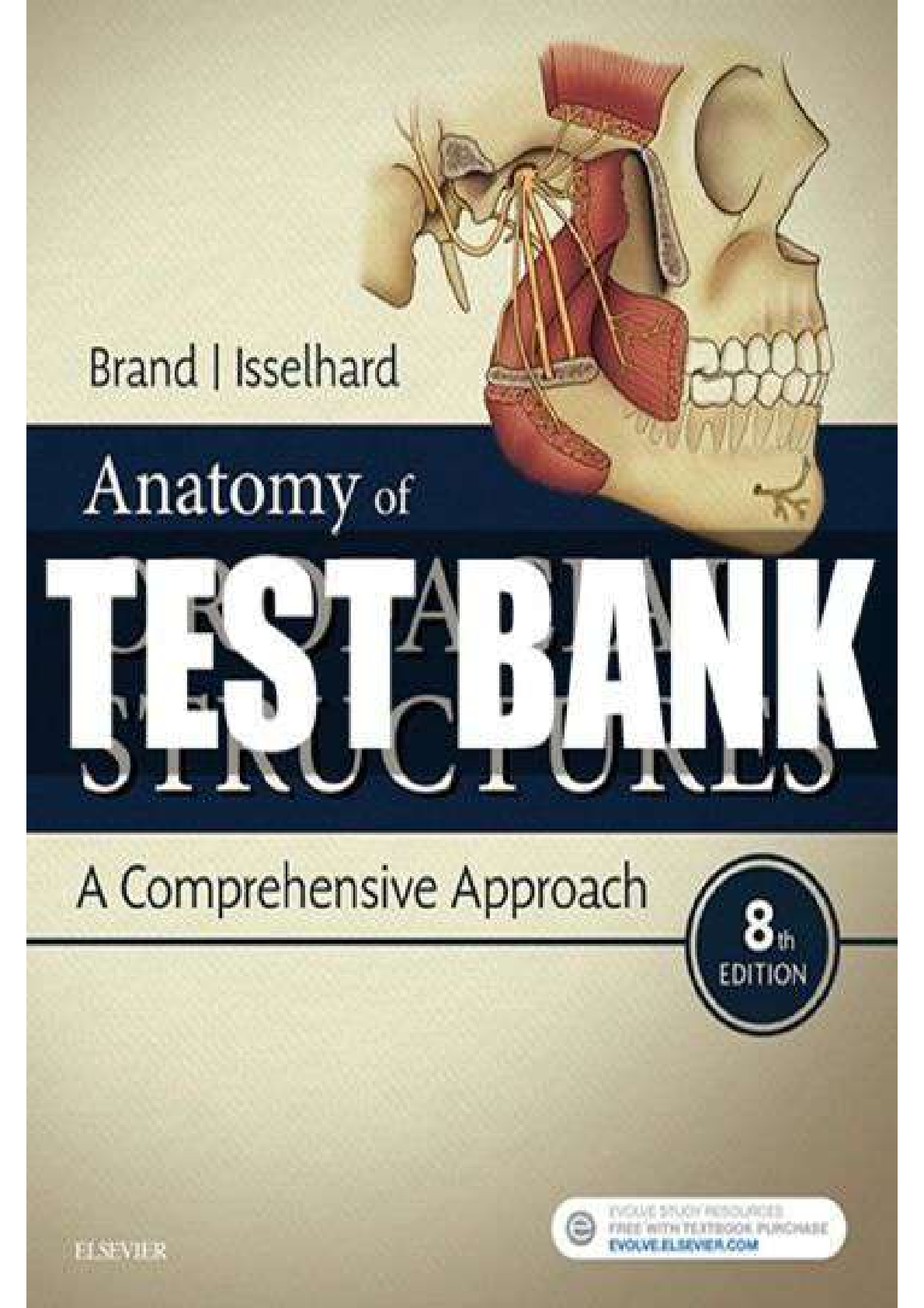test bank Anatomy of Orofacial Structures 8th Edition Brand
Document Content and Description Below
Chapter 02: The Tooth: Functions and Terms Brand/Isselhard: Anatomy of Orofacial Structures, 8th Edition MULTIPLE CHOICE 1. The sensation of pain is felt in which part of the tooth? a. Enamel b. ... Dentin c. Cementum d. Pulp ANS: D The dental pulp is the sensory and nourishing portion of the tooth. It is composed of blood vessels, lymph vessels, connective tissue, and nerve cells. The pulp also contains special dentin-reparative/formative cells called odontoblasts. Sensation of pain is not felt in enamel, cementum, or dentin. REF: pp. 15-17 OBJ: To identify the different tissues that compose teeth NAT: CDA: GC I.A.7. Identify basic oral and dental anatomy, physiology, and development, including but not limited to: teeth. TOP: BLOOM: Remembering 2. Each of the following terms refers to an “in-between” surface EXCEPT one. Which one is the EXCEPTION? a. Facial b. Mesial c. Distal d. Proximal ANS: A Proximal, mesial, and distal are terms that describe surfaces of teeth that face a neighboring tooth; they also can be thought of as “in-between” surfaces. Proximal is the more general term for this type of surface. More specifically, a mesial surface is the proximal surface of a tooth closest to the midline; distal describes the proximal surface farthest from the midline. Facial surfaces are NOT proximal surfaces. Facial surfaces are more specifically known as labial (lip) surfaces on anterior teeth or buccal surfaces on posterior teeth. REF: p. 19 OBJ: To define the terminology used in naming the landmarks of teeth NAT: CDA: GC I.A.7. Identify basic oral and dental anatomy, physiology, and development, including but not limited to: teeth. | CDA: GC I.C.2. Identify the surfaces of the tooth. TOP: BLOOM: Remembering 3. Which of the following is an example of a line angle? a. Mesiolabioincisal b. Buccolingual c. Mesiodistal d. Labioincisal e. Inciso-occlusal ANS: D Anatomy of Orofacial Structures 8th Edition Brand Test Bank Only the labioincisal description qualifies as a line angle because line angles separate two adjacent surfaces of a tooth by forming a junction. The labioincisal line angle represents the junction of the labial surface of an anterior tooth with its incisal edge; note these are two adjacent surfaces on anterior teeth. Buccolingual, inciso-occlusal, and mesiodistal junctions are not adjacent surfaces. A mesiolabioincisal line angle is not a line angle because it represents the junction of three adjacent surfaces and is thus a point angle. REF: pp. 17-19 OBJ: To name and identify the line angles of teeth NAT: CDA: GC I.A.7. Identify basic oral and dental anatomy, physiology, and development, including but not limited to: teeth. TOP: BLOOM: Remembering 4. The hard yellow tissue that makes up the bulk of the tooth is called the a. enamel b. dentin c. cementum d. pulp ANS: B Dentin is the hard, dense, calcified tissue that forms the greatest bulk of the tooth because it forms the largest portion of the crown and root. Softer than enamel, but harder than cementum or bone, the chemical composition of dentin is 70% inorganic and 30% organic matter and water. Unlike enamel [Show More]
Last updated: 1 year ago
Preview 1 out of 13 pages
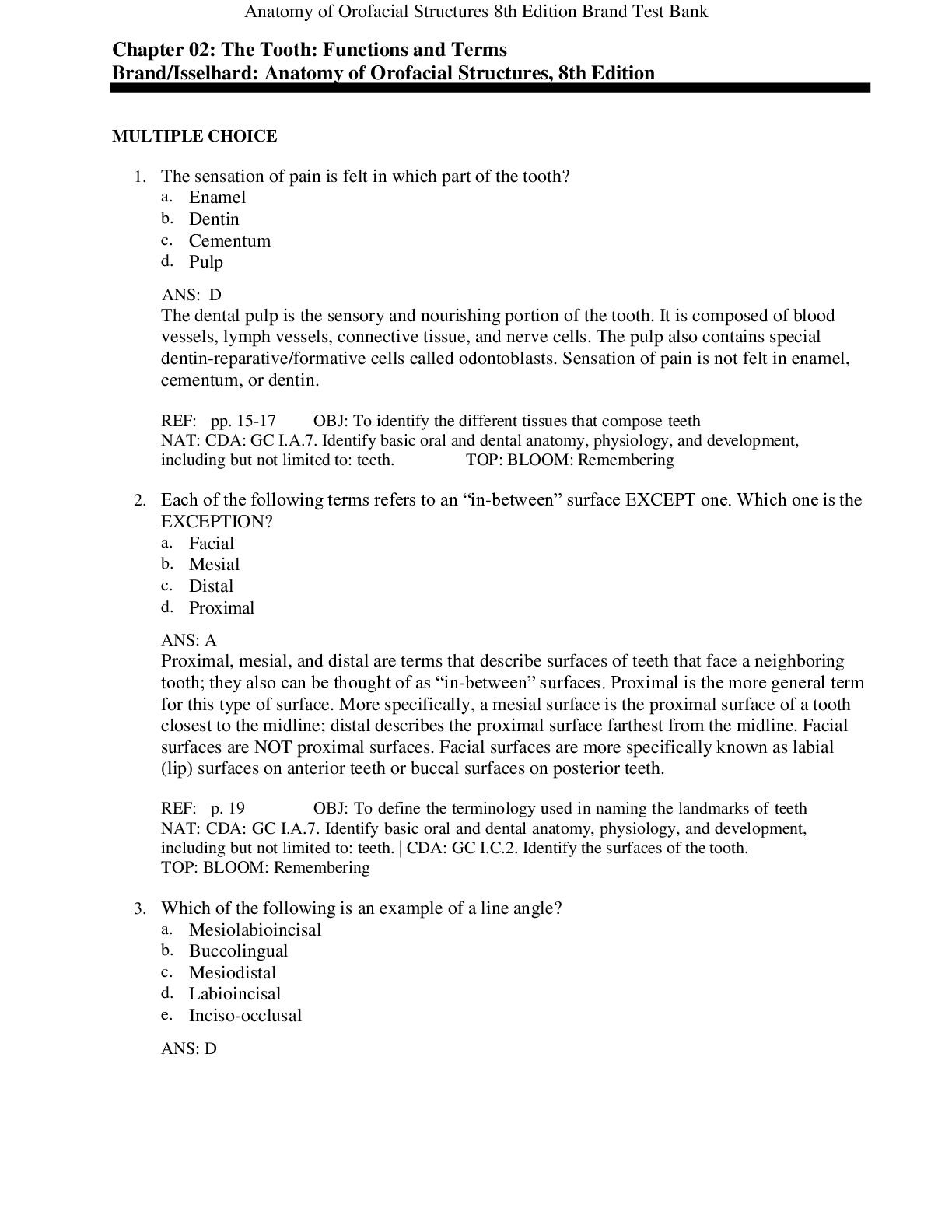
Reviews( 0 )
Document information
Connected school, study & course
About the document
Uploaded On
Oct 15, 2021
Number of pages
13
Written in
Additional information
This document has been written for:
Uploaded
Oct 15, 2021
Downloads
0
Views
56


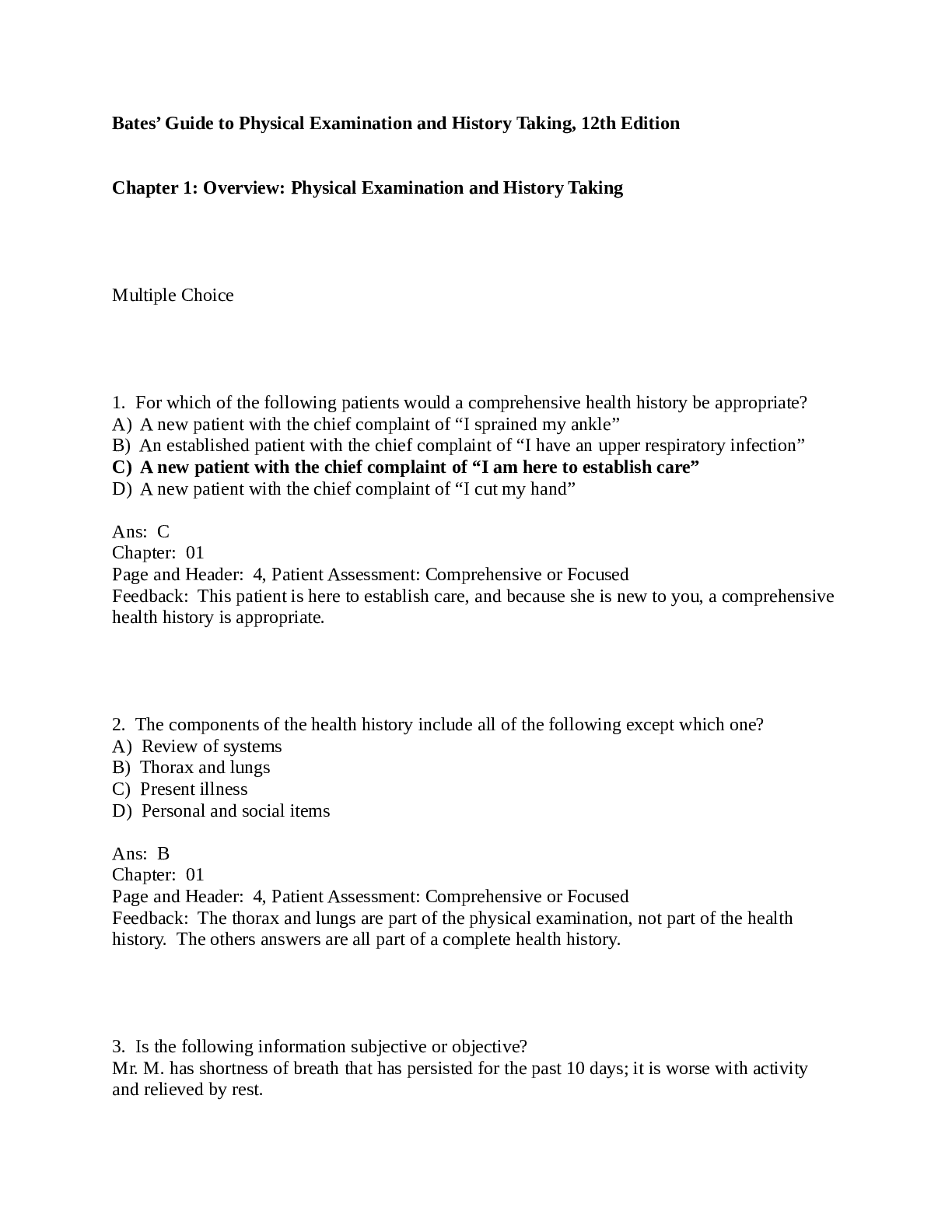
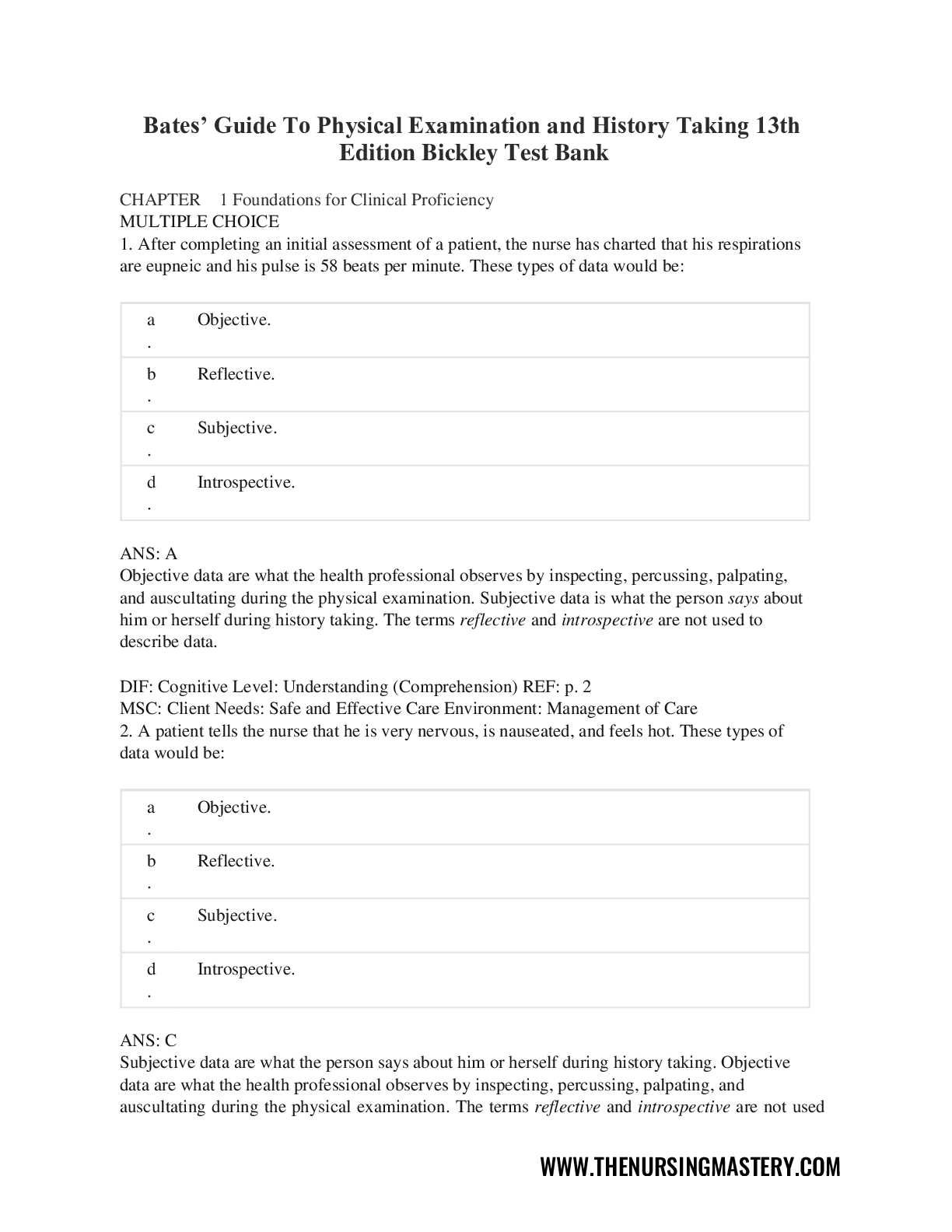
.png)
.png)
.png)

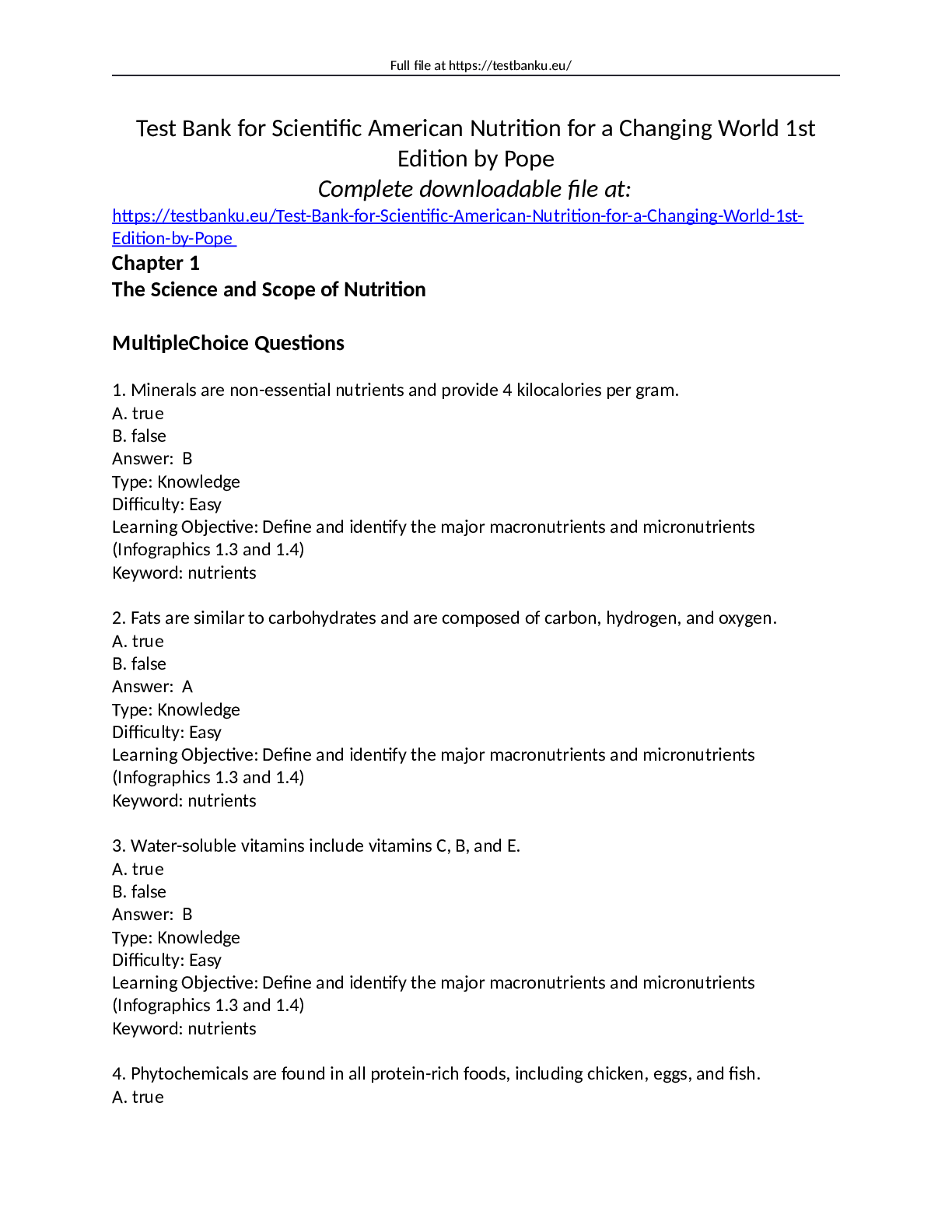
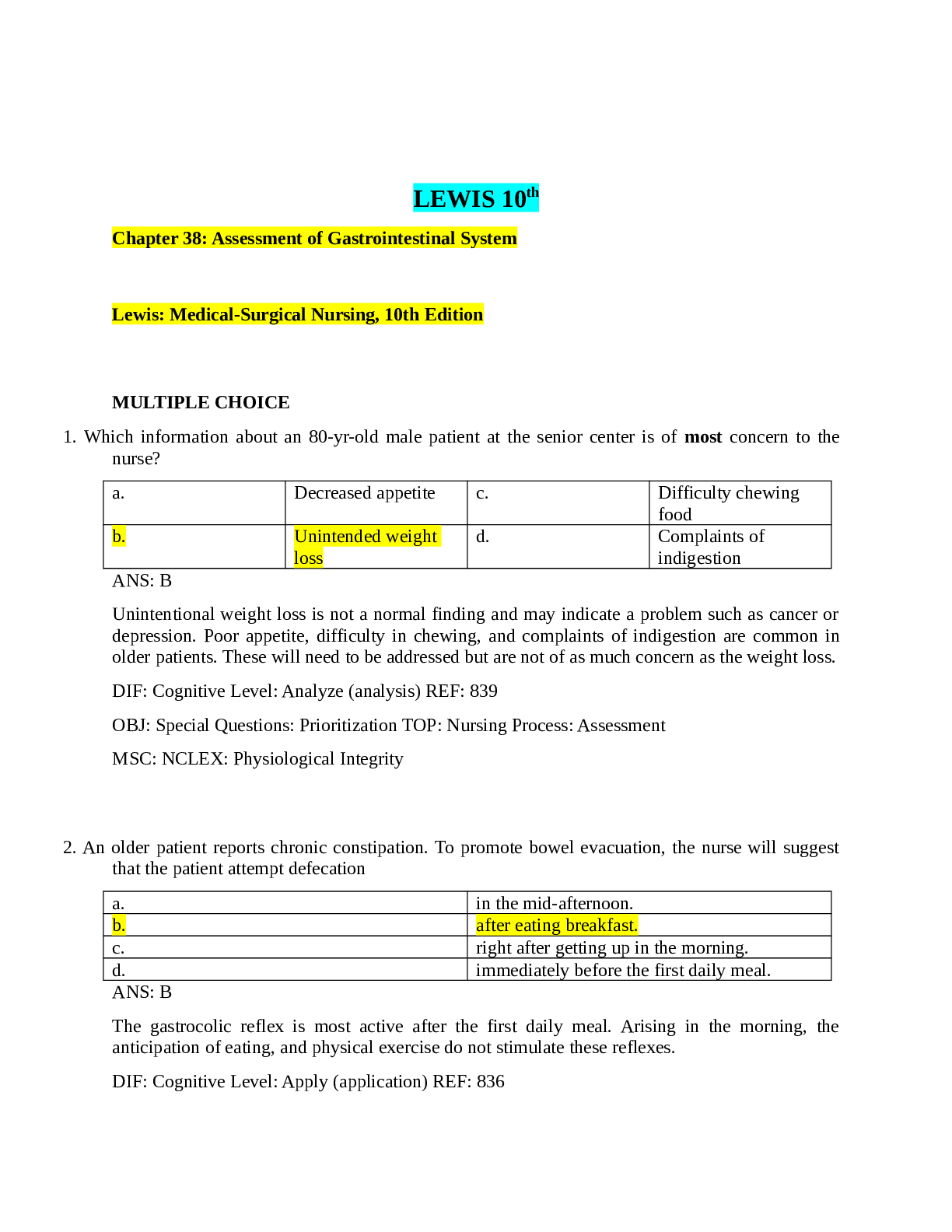

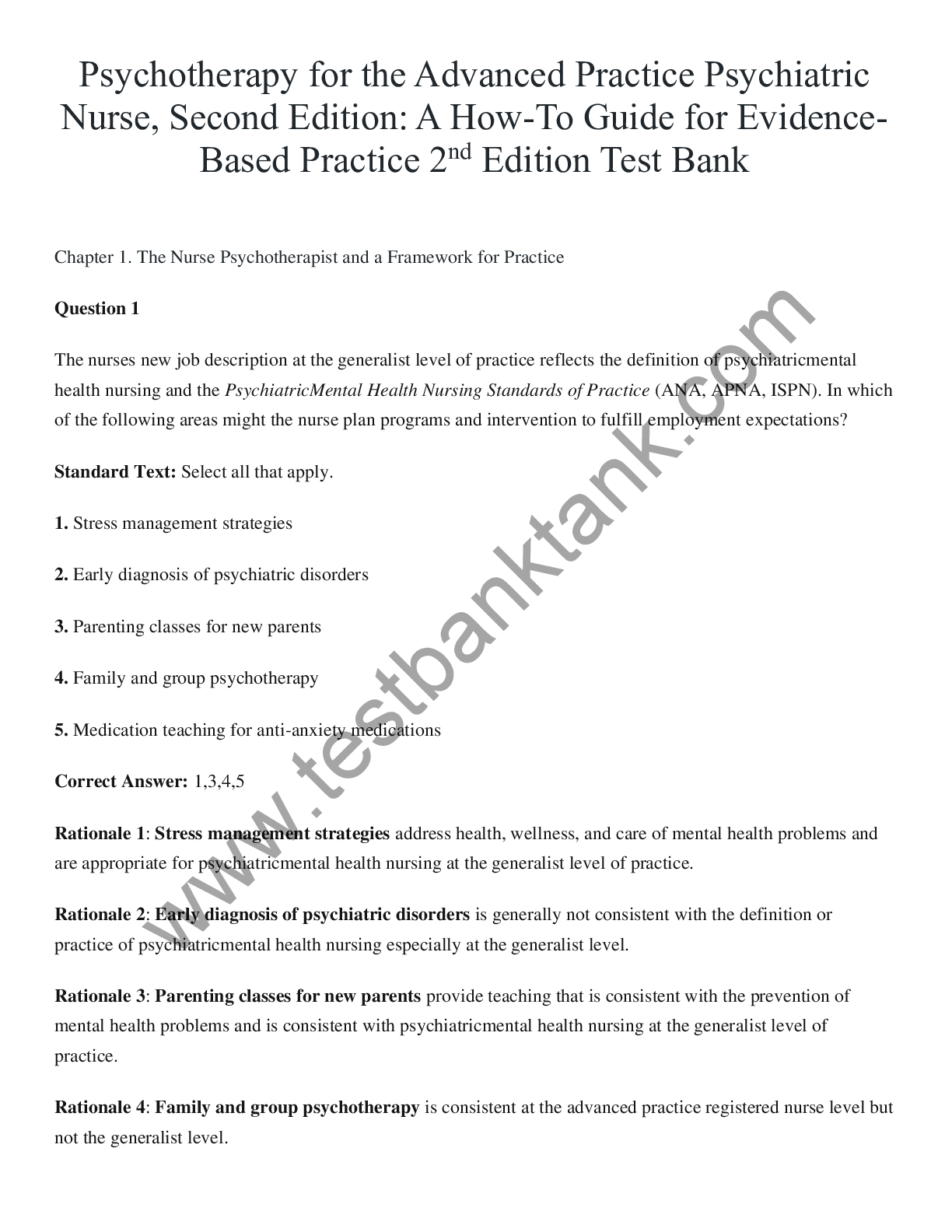
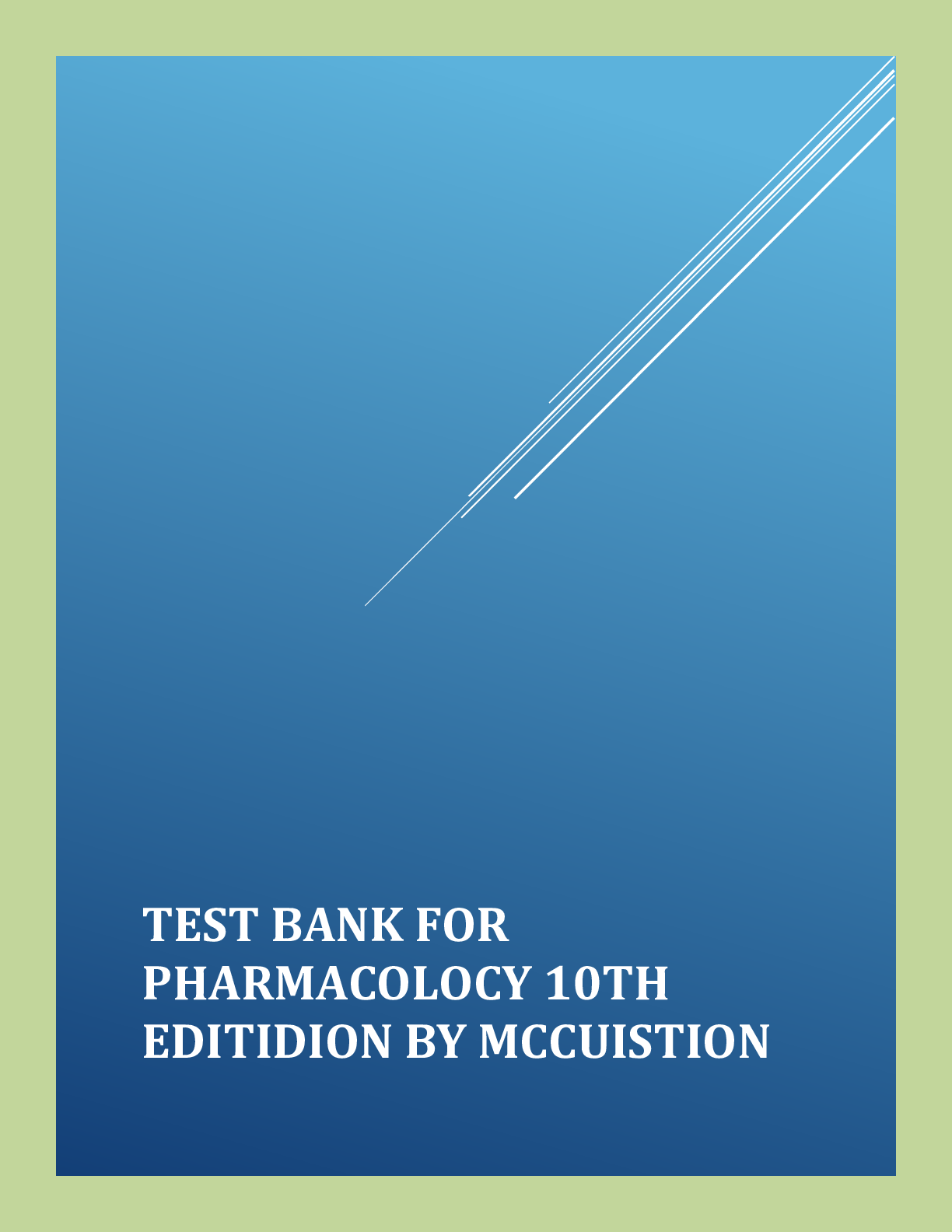
.png)


